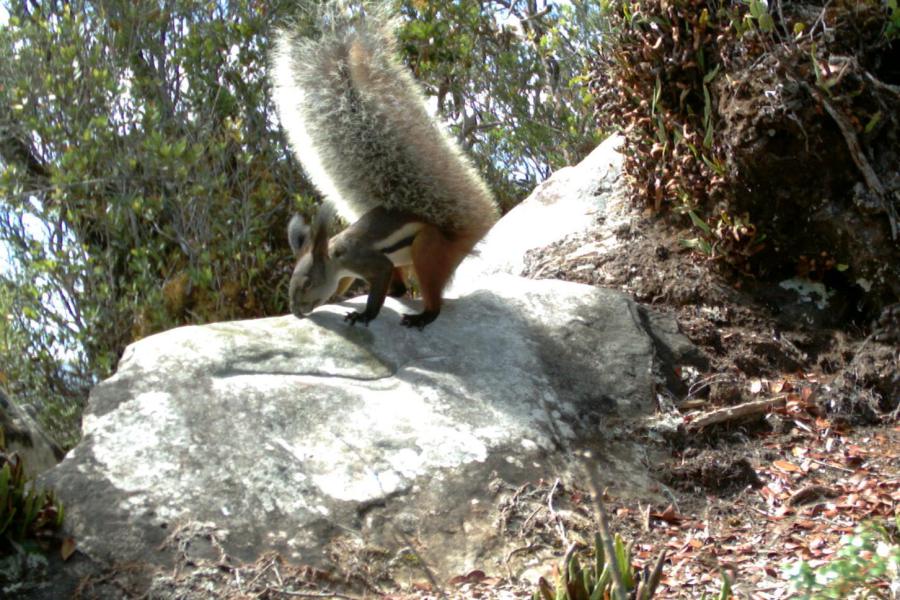Good morning, Whitewater.
Wednesday in Whitewater will be mostly sunny, with a high in the low seventies, and north winds of about five mph.
The Community Development Authority’s Seed Capital Screening Committee meets at 3:30 PM, and the CDA Board at 4:30 PM.

Not all squirrels look alike, but perhaps no species of squirrel is so striking as the Tufted Ground Squirrel of Borneo. They have a world-class reputation for those tails:
It’s a record that none of us even knew existed, but the tufted ground squirrel from Borneo is the official owner of the Fluffiest Tail in the World. Good job, tufted ground squirrel. We’ll never know the sacrifices you made to achieve such fluff, the lost time with your family and friends that you’ll never get back due to whatever maintenance fluff requires, but we respect an animal with ambition.
But, it seems, they have a fantastical reputation for mayhem, too:
The tufted ground squirrel (Rheithrosciurus macrotis), which grows to around double the size of a regular squirrel, has a reputation for hunting deer – well, more like serial killing deer – if local legends are to be believed. According to Erik Stokstad at Science Magazine, “Hunters say that the squirrels will perch on low branches, jump onto a deer, gash its jugular vein, and disembowel the carcass.” The squirrels would then eat the deer’s stomach contents, liver and heart. Another version of the legend from villages close to the forest edge tells of these squirrels killing domestic chickens and eating their hearts and livers only.
“It sounds pretty fantastical,” Roland Kays, a zoologist at the North Carolina Museum of Natural Sciences, told Stokstad. “Even more than its fluffy tail.”
On this day in 1945, America successfully tests an atomic bomb.
On this day in 1941, Wisconsin gets a national wildlife refuge:
On this date the Horicon National Wildlife Refuge was established after a 20 year struggle by conservationists. The refuge is over 21,000 acres, encompasses the Horicon Marsh, the largest freshwater cattail marsh in the United States, and is home to over 223 species of birds and other wildlife. [Source:History Just Ahead: A Guide to Wisconsin’s Historical Markers edited by Sarah Davis McBride, p. 6 andHoricon National Wildlife Refuge]
Google-a-Day poses a question about art:
What was the name of the 8000-acre estate inherited by the art patron who commissioned “Lobster Telephone”?
